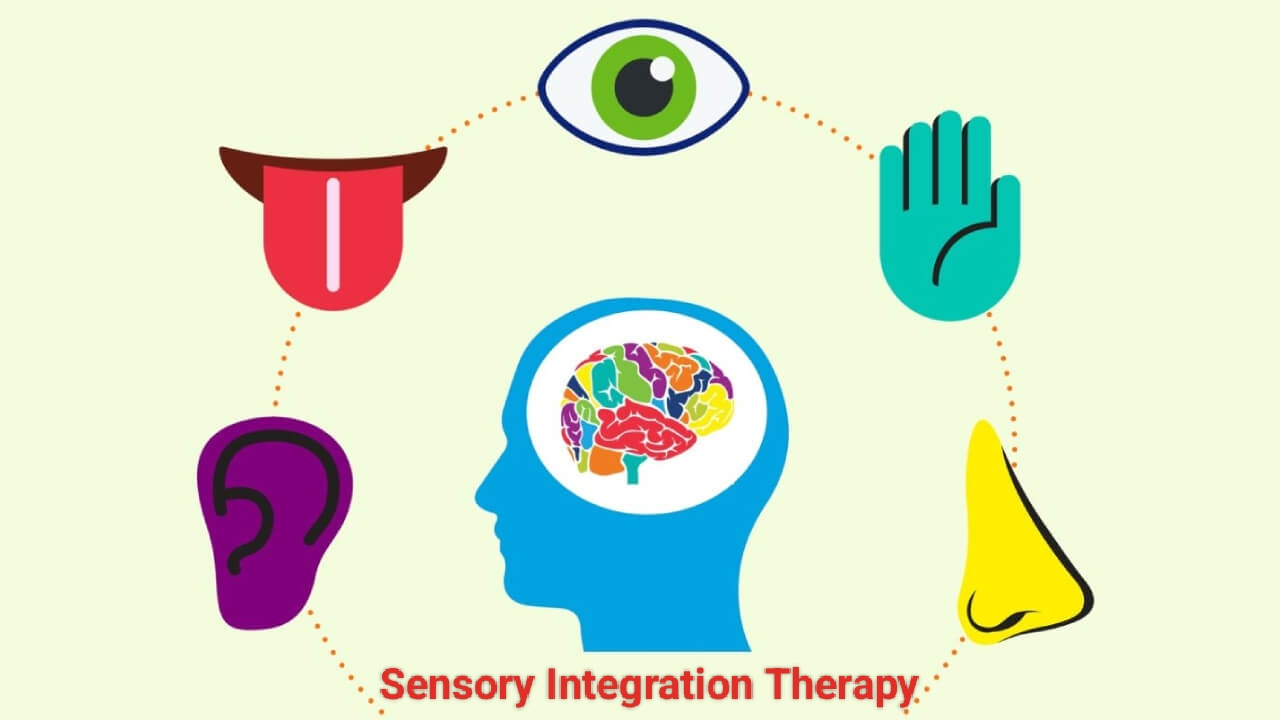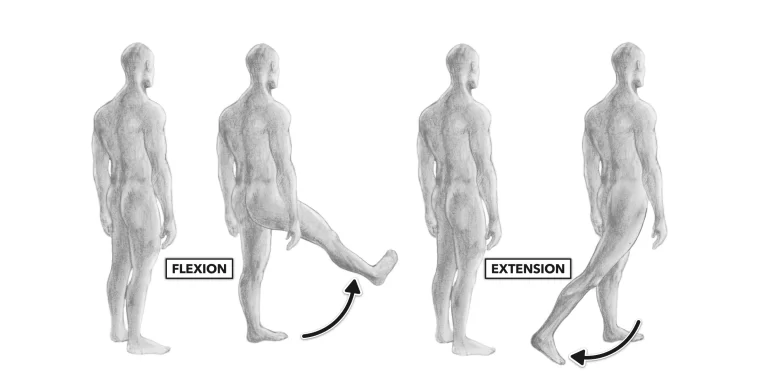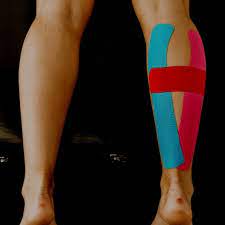Sensory integration therapy
Table of Contents
Introduction
Sensory integration therapy (SIT) is a form of Physical therapy that helps people with sensory processing difficulties integrate and process sensory information from the environment effectively. Sensory processing refers to the way our nervous system receives, interprets, and responds to sensory information. This therapy aims to help individuals with sensory processing difficulties regulate their responses to sensory input and improve their ability to participate in everyday activities.
Sensory processing difficulties can occur in both children and adults and can impact various aspects of daily life, including social interactions, academic performance, and self-care skills. These difficulties can result from a range of conditions, including autism spectrum disorder, attention-deficit/hyperactivity disorder, developmental delays, and sensory processing disorder.
Sensory integration therapy is based on the work of Dr. A. Jean Ayres, an occupational therapist, and neuroscientist who pioneered the concept of sensory integration. According to Ayres, the brain must process and integrate sensory information from various sources to form an accurate perception of the environment. In individuals with sensory processing difficulties, the brain may not process or integrate sensory input effectively, leading to challenges with sensory modulation, discrimination, and organization.
Principles
Sensory integration therapy is based on several principles that guide the intervention process. Some of the key principles of sensory integration therapy include:
1. Sensory processing is critical to daily functioning: Sensory processing is essential for individuals to engage in daily activities such as learning, socializing, and participating in leisure activities.
2. The brain can reorganize and adapt: The brain is capable of changing and adapting in response to new experiences and stimuli. Sensory integration therapy aims to promote positive changes in the brain’s neural pathways to improve sensory processing and integration.
3. Active participation in sensory experiences is essential. Individuals must be actively engaged in sensory experiences to improve their ability to process and integrate sensory information. Sensory integration therapy focuses on providing opportunities for individuals to engage in meaningful and motivating sensory experiences.
4. The individual’s unique sensory profile guides therapy: Each individual has a unique sensory profile with different strengths and challenges in sensory processing. Sensory integration therapy is tailored to the individual’s specific sensory needs and goals.
5. Intervention must be gradual and individualized: Sensory integration therapy involves a gradual and individualized approach, where activities and interventions are gradually introduced and modified to promote positive changes in sensory processing.
6. Generalization of daily activities is essential: The ultimate goal of sensory integration therapy is to improve the individual’s ability to function in daily life. To achieve this, therapy must promote the generalization of sensory processing skills to a variety of settings and activities.
The principles of sensory integration therapy emphasize the importance of understanding and addressing the unique sensory processing needs of each individual, promoting active engagement in sensory experiences, and promoting the generalization of skills to daily life. By following these principles, therapists can help individuals improve their sensory processing and integration skills and ultimately improve their quality of life.
Indications
Sensory integration therapy may be indicated for individuals who have difficulty processing and responding appropriately to sensory information. Some of the specific indications for sensory integration therapy may include:
1. Sensory processing disorder: Sensory processing disorder is a condition in which individuals have difficulty processing and responding to sensory information. Sensory integration therapy may be indicated for individuals with sensory processing disorder to help them improve their ability to process and integrate sensory information.
2. Autism spectrum disorder: Many individuals with autism spectrum disorder have challenges with sensory processing, such as hypersensitivity to certain stimuli. Sensory integration therapy may be indicated for individuals with an autism spectrum disorder to help them better regulate their sensory input and improve their overall functioning.
3. Attention deficit hyperactivity disorder (ADHD): Individuals with ADHD may have difficulty with sensory processing and regulation, which can affect their attention and behavior. Sensory integration therapy may be indicated for individuals with ADHD to help them improve their ability to regulate their sensory input and improve their attention and behavior.
4. Developmental delays: Some children with developmental delays may have sensory processing challenges that affect their overall development. Sensory integration therapy may be indicated for these children to help them improve their sensory processing and integration skills, which can ultimately support their overall development.
5. Traumatic brain injury (TBI): Individuals who have experienced a traumatic brain injury may have difficulty with sensory processing and integration, which can affect their overall functioning. Sensory integration therapy may be indicated for individuals with TBI to help them improve their sensory processing and integration skills and improve their overall functioning.
Sensory integration therapy may be indicated for individuals with a range of conditions or challenges that affect their ability to process and respond appropriately to sensory information. It is important to work with a qualified occupational therapist to determine if sensory integration therapy is appropriate for an individual’s specific needs and goals.
Contraindications
While sensory integration therapy can be highly beneficial for many individuals, there are certain contraindications or situations where it may not be appropriate or could even be harmful. Some of the contraindications to sensory integration therapy may include:
1. Acute illness or medical condition: If an individual is experiencing an acute illness or medical condition that could be exacerbated by sensory input or physical activity, sensory integration therapy may not be appropriate until the condition is stabilized.
2. Seizure disorder: sensory integration therapy that involves flashing lights or rapid movement may trigger seizures in individuals with seizure disorders. In such cases, sensory integration therapy should be avoided or modified to minimize the risk of seizures.
3. Sensory aversion: Some individuals may have such strong sensory aversions that sensory integration therapy could be overwhelming and distressing for them. In such cases, therapy may need to be modified or alternative approaches used.
4. Psychiatric condition: Individuals with severe psychiatric conditions or significant emotional or behavioral challenges may not be able to tolerate sensory integration therapy or may require additional support and supervision during therapy.
5. Sensory overload: In some cases, individuals may already be experiencing sensory overload or have difficulty regulating their sensory input. Sensory integration therapy may not be appropriate in such cases and may need to be delayed until the individual’s sensory regulation skills have improved.
It is important to work with a qualified occupational therapist who is trained in sensory integration therapy to determine if therapy is appropriate for an individual’s specific needs and goals and to ensure that therapy is conducted safely and effectively. Therapists will carefully evaluate an individual’s sensory processing abilities and any contraindications before developing a therapy plan.
Intervention
Sensory integration therapy is a form of occupational therapy that aims to help individuals who have difficulty processing and responding appropriately to sensory information. The intervention in sensory integration therapy typically involves the following steps:
• Assessment: The therapist will first assess the individual’s sensory processing abilities using standardized tests and clinical observation. This will help identify the specific sensory challenges that the individual is facing and inform the development of a treatment plan.
• Treatment planning: Based on the assessment results, the therapist will develop a customized treatment plan that is tailored to the individual’s specific needs and goals. The treatment plan may involve a range of activities and interventions designed to address the individual’s sensory processing challenges.
• Sensory diet: A sensory diet is a customized set of activities and strategies that an individual can use to regulate their sensory input throughout the day. The therapist will work with the individual and their family to develop a sensory diet that is appropriate for their needs and preferences.
• Sensory integration activities: Sensory integration therapy involves a range of activities that are designed to help individuals process and respond appropriately to sensory information. These activities may include swinging, bouncing on a therapy ball, playing with tactile materials, and other exercises designed to stimulate different senses.
• Gradual exposure to sensory stimuli: In some cases, individuals may be hypersensitive to certain sensory stimuli. Sensory integration therapy may involve gradually exposing the individual to these stimuli in a controlled and safe environment to help them desensitize and become more comfortable with the stimuli.
• Parent and caregiver involvement: Sensory integration therapy often involves significant involvement from parents and caregivers. They may be asked to participate in therapy sessions or to implement sensory strategies and activities at home to support their individual progress.
Sensory integration therapy is a highly individualized approach that involves a range of activities and interventions designed to address an individual’s specific sensory processing challenges. The therapy is typically delivered in a structured and supportive environment by a qualified occupational therapist.
Techniques
Some of the key techniques used in sensory integration therapy include:
1. Deep pressure therapy: This technique involves applying deep pressure to the body, such as through weighted blankets or compression garments, to help individuals feel more grounded and regulated.
2. Swinging: Swinging can provide a calming and regulating sensation for some individuals. Therapists may use different types of swings, such as platform swings or cocoon swings, to provide different types of sensory input.
3. Tactile activities: Tactile activities involve exploring different textures and sensations through touch. This may include playing with sand, shaving cream, or other tactile materials.
4. Vestibular activities: Vestibular activities involve stimulating the vestibular system, which helps us maintain balance and spatial orientation. This may include activities such as spinning, rolling, or bouncing on a therapy ball.
5. Proprioceptive activities: Proprioceptive activities involve providing input to the muscles and joints, which can help individuals feel more grounded and aware of their body position. This may include activities such as jumping, pushing, or pulling heavy objects.
6. Environmental modifications: In some cases, modifying the individual’s environment can help them better regulate their sensory input. This may involve adjusting lighting, noise levels, or other sensory stimuli in the environment.
Advantages
Sensory integration therapy (SIT) is a type of therapy that helps individuals with sensory processing issues better process and integrate sensory information. Some of the advantages of SIT include:
- Improved sensory processing: SIT can help individuals with sensory processing issues better integrate sensory information, which can improve their overall ability to function in daily life.
- Better self-regulation: SIT can help individuals better regulate their emotional and behavioral responses to sensory input, leading to improved self-regulation.
- Improved motor skills: SIT can help to improve motor skills and coordination, which can have positive effects on overall physical development and performance.
- Increased attention and focus: SIT can help individuals better filter out distracting sensory input, leading to improved attention and focus.
- Reduced anxiety: SIT can help individuals better understand and cope with sensory input, which can reduce anxiety and improve overall well-being.
- Improved socialization: SIT can help individuals better process and respond to social cues, leading to improved socialization and communication skills.
- Improved academic performance: SIT can help individuals better process and integrate sensory information, leading to improved academic performance in areas such as reading, writing, and math.
SIT can have numerous benefits for individuals with sensory processing issues, and it is a safe and non-invasive therapy approach that can be tailored to the individual’s specific needs and circumstances.
Disadvantages
While sensory integration therapy (SIT) can be a beneficial treatment for individuals with sensory processing issues, there are also some potential disadvantages or limitations to consider. These include:
- Limited evidence: While SIT is widely used, there is limited evidence to support its effectiveness. More research is needed to fully understand the benefits of SIT for individuals with sensory processing issues.
- Time-consuming: SIT can be a time-consuming therapy, as it often requires multiple sessions over an extended period of time.
- Cost: SIT sessions can be expensive and may not be covered by insurance, making them less accessible for some individuals.
- Need for specialized training: SIT should only be performed by a qualified therapist who has received specialized training in the technique. This can make it difficult to access in some areas or for some individuals.
- Discomfort or overstimulation: Some individuals may find SIT uncomfortable or overstimulating, particularly if they are particularly sensitive to certain types of sensory input.
- Not suitable for everyone: SIT may not be suitable for individuals with certain medical conditions or sensory processing issues, and it should be approached with caution in certain cases.
It is important to discuss any potential disadvantages or limitations of SIT with a qualified therapist to fully understand whether it is the right treatment option for an individual’s specific needs and circumstances.
Conclusion
Sensory integration therapy is a therapeutic approach used to help individuals with sensory processing difficulties. The therapy provides opportunities for individuals to engage in structured and therapeutic sensory experiences in a sensory-rich environment. The therapy aims to improve sensory processing abilities and reduce sensory-related difficulties in children and adults with neurological conditions. If you or a loved one has sensory processing difficulties, talk to a healthcare provider about the possibility of incorporating sensory integration therapy into their treatment plan.
FAQs
What are examples of sensory integration therapy?
Some examples of sensory integration therapy techniques and activities include:
Deep pressure therapy: This involves applying pressure to the body using weighted blankets, compression vests, or massages. It can help calm the nervous system and improve body awareness.
Vestibular input: This involves using movement and balance activities to stimulate the vestibular system, which is responsible for balance and spatial orientation. Examples include swinging, spinning, or rocking.
Proprioceptive input: This involves using activities that provide input to the muscles and joints, which can help to improve body awareness and coordination. Examples include jumping, climbing, and heavy lifting.
Tactile input: This involves using touch to stimulate the tactile system, which is responsible for processing information from the skin. Examples include using textured materials or playing with different sensory toys.
Visual input: This involves using visual stimulation to improve visual processing and eye-hand coordination. Examples include tracking games or using light-up toys.What are the five main sensory systems?
The five main sensory systems are:
Visual System: This system allows us to perceive and interpret visual information from the environment. It includes the eyes, optic nerves, and the visual cortex in the brain.
Auditory System: This system allows us to perceive and interpret sound and speech. It includes the ears, auditory nerves, and auditory cortex in the brain.
Olfactory System: This system allows us to perceive and interpret smells. It includes the nose and olfactory receptors in the brain.
Gustatory System: This system allows us to perceive and interpret tastes. It includes the tongue and taste buds in the brain.
Somatosensory System: This system allows us to perceive and interpret sensations related to touch, pressure, temperature, and pain. It includes the skin, muscles, joints, and somatosensory cortex in the brain.
These five sensory systems work together to provide us with a comprehensive understanding of the world around us.What is sensory integration disorder?
Sensory integration disorder, also known as sensory processing disorder (SPD), is a condition where the brain has difficulty processing and interpreting sensory information from the environment and the body. This can lead to difficulty responding to sensory stimuli in an appropriate or effective manner.
Individuals with sensory integration disorder may experience hypersensitivity or hyposensitivity to sensory input, which can cause a range of behavioral, emotional, and social difficulties. For example, they may be extremely sensitive to loud noises, bright lights, or certain textures and may become overwhelmed or upset in these situations. Alternatively, they may have reduced sensitivity to sensory input, which can lead to a lack of awareness of their body or surroundings.
Some common symptoms of sensory integration disorder include:
• Overreacting or underreacting to sensory input
• Difficulty with coordination and motor skills
• Difficulty with balance and spatial awareness• Difficulty with social interactions
• Difficulty with emotional regulation
• Avoidance of certain activities or situations due to sensory issues
Sensory integration disorder can be diagnosed by a qualified occupational therapist or other healthcare professional trained in sensory integration. Treatment typically involves sensory integration therapy, which uses a variety of activities and techniques to help the individual improve their ability to process sensory information and respond to sensory stimuli more effectively.How do I know if my child has sensory integration disorder?
If you suspect that your child may have a sensory integration disorder, it is important to seek a professional evaluation from a qualified healthcare professional, such as an occupational therapist or pediatrician, who is knowledgeable about sensory processing disorders.
Here are some signs that may indicate that your child has a sensory integration disorder:
1. Over-sensitivity or under-sensitivity to sensory input:
• Reacting strongly to certain textures, smells, sounds, or lights
• Refusing to wear certain clothing textures or materials
• Difficulty tolerating grooming activities such as hair brushing or nail cutting
2. Difficulty with gross and fine motor skills:
• Clumsiness or difficulty with coordination and balance
• Difficulty with handwriting or using scissors
• Avoiding activities that require motor skills, such as running, jumping, or climbing
3. Emotional or behavioral issues:
• Easily overwhelmed or anxious in sensory-rich environments such as crowded spaces or loud noises
• Difficulty with transitions or changes in routines
• Meltdowns or tantrums that appear out of proportion to the situation
4. Social difficulties:
• Difficulty with peer interactions or forming friendships
• Avoidance of group activities or difficulty participating in group play
• Sensitivity to touch or proximity to others
If your child exhibits any of these signs, it is important to consult with a healthcare professional who can conduct an evaluation and provide guidance on appropriate treatment options. Sensory integration disorder can be successfully managed with early intervention and ongoing therapy.Is sensory integration curable?
Sensory integration disorder, also known as sensory processing disorder (SPD), is a neurological condition that affects the way the brain processes sensory information. While it cannot be cured, it can be effectively managed through therapy and other interventions.
The goal of sensory integration therapy is not to cure the disorder but to help the individual develop better sensory processing skills and strategies to cope with sensory input in their daily lives. The therapy can help to improve the individual’s ability to process sensory information, which can lead to better attention, coordination, and overall functioning.






